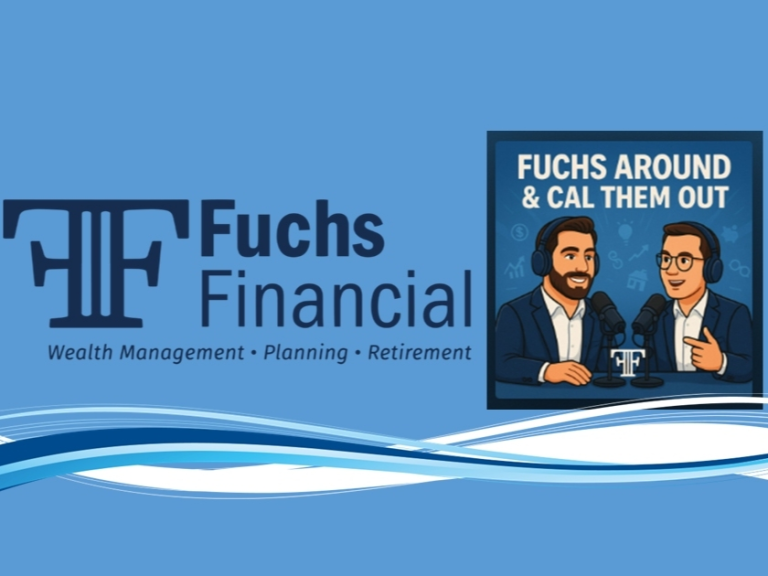The way market volatility affects retirement savings worries many investors, especially those close to retirement. Every major market decline from 1987 through 2022 bounced back eventually. Some markets even recovered by 68% in just one year. But if you have passed 55 with less time to recover, today’s market swings could seriously threaten your retirement security.
Your ability to handle market volatility becomes vital since American retirement savings reached $44 trillion by late 2024. The numbers tell an interesting story. Investors who stuck to their plans through the financial crisis from 2007 to 2013 saw their average account balances grow by 86%. This fact emphasizes why you need to understand volatility patterns, especially when diversified stock indexes typically need about three and a half years to recover during bear markets. Your risk of losing everything in a 401k during a market crash mostly depends on where you invested your money and how you react to market changes.
Understanding Market Volatility and Its Impact on Retirement
Financial markets work like a complex ecosystem. Many factors influence asset prices each day. Understanding these dynamics is vital for retirement planning in 2025.
What causes market volatility?
Several interconnected factors create price fluctuations in the market. Economic indicators such as GDP growth, unemployment rates, and inflation data trigger market reactions when they differ from expectations. Central banks’ interest rate changes influence market behavior. Higher rates increase borrowing costs and affect corporate profits.
Markets respond to geopolitical events with increased volatility. Wars, trade disputes, and political instability bring uncertainty. Corporate earnings reports can spark big price movements when results surprise investors.
Investor sentiment and behavior can magnify market swings beyond economic fundamentals. This happens through speculation, herd mentality, or panic. Global events like pandemics and natural disasters create market unpredictability.
How volatility affects retirement portfolios
Market volatility presents unique challenges to retirement savers. The sequence of returns risk stands out as one of the most important concerns. Market downturns right before or after retirement can damage portfolios severely. People who withdraw funds from declining assets to cover expenses can see their savings deplete faster.
Portfolio recovery in later years might not offset these early losses from selling at lower prices. A portfolio with similar long-term average returns can produce very different outcomes based on when volatility occurs.
New retirees who start using their savings face the highest risk from market fluctuations. Young investors have decades to recover from downturns. Those near or just starting retirement have less time to recoup losses.
Can you lose all your money in a 401k if the market crashes?
Market crashes raise valid concerns. Historical data offers some comfort: every major market decline from 1987 through 2022 reversed. Recoveries ranged between 21% and 68% within the following year. Research shows the average peak-to-peak recovery time for diversified stock indexes in bear markets took about three and a half years.
A well-diversified 401(k) rarely loses everything. Spreading investments across different asset classes helps reduce risk. Bonds and fixed-income investments provide more stability than stocks.
The real danger lies not in market crashes but in panic-driven decisions. Selling at market bottoms or making early withdrawals locks in losses and brings tax penalties. Taking loans from retirement accounts after market declines can lock in losses if you stay uninvested during the market’s recovery.
How to Adjust Spending and Withdrawals During a Downturn
Market turbulence hitting retirement accounts requires a smart spending strategy. Retirees can protect their nest eggs through tough times by taking specific actions instead of making emotional decisions.
Track and categorize your expenses
A detailed budget helps you see things clearly during uncertain times. Your current expenses need a thorough review to understand how they might change throughout retirement. Research from the Bureau of Labor Statistics, shows housing (35%), transportation (14%), health care (13%), and food (13%) make up the biggest spending areas for people aged 65 and older.
Here’s the quickest way to track everything:
- Group expenses into “needs” (essentials like housing, food, healthcare), “wants” (gym memberships, dining out), and “wishes” (travel, hobbies)
- Use detailed budget worksheets that include categories like utilities, insurance, personal care, and family’s needs
- Keep an eye on spending patterns to spot unnecessary expenses you could cut back
Most retirees spend less as they get older, with household spending typically decreasing by 2% annually. Tracking remains vital to match essential expenses with guaranteed income sources.
Delay non-essential purchases
Your portfolio will last longer if you postpone major expenses during market downturns. Big purchases should wait until markets recover, giving your investments time to bounce back. This approach limits how much you need to take from retirement accounts while markets fluctuate.
You can cut back on leisure travel, look at subscription services you rarely use, or rethink nonessential items. These small changes add up to make a big difference over time.
Use a flexible withdrawal strategy
Fixed withdrawal methods can drain retirement funds in volatile markets. These adaptable strategies work better:
- Forgoing inflation adjustments: Skip inflation increases after years with negative portfolio returns
- Guardrails method: Set withdrawal percentage limits that change based on portfolio performance—reduce spending by 10% if withdrawal rates go above original levels by 20%
- Variable withdrawals: Change withdrawal amounts based on how your portfolio performs, taking less during weak markets
Research shows flexible approaches let you start with higher withdrawal rates while protecting against market downturns. Even small spending adjustments during volatile times can reduce sequence-of-return risk.
Smart Ways to Access Cash Without Selling at a Loss
Market downturns require smart strategies to access cash without selling investments at a loss. Several methods can help you maintain liquidity while markets recover.
Tap into emergency funds or savings accounts
Emergency funds act as your first defense when markets become volatile. Your emergency fund should cover three to six months of expenses in accounts you can easily access. Using these funds first gives your investment portfolio time to bounce back and prevents selling assets at lower prices. Using emergency savings might seem counterintuitive, but market downturns are exactly why you set aside these funds.
Use interest and dividends first
Dividend-paying investments create steady income streams without touching your principal. Yes, it is worth noting that 97% of annuity owners say their payments reduce worries about running out of money. Here’s how to get quick access to cash:
- Stop dividend reinvestments and get direct payments instead
- Use interest payments from bonds or other fixed-income investments first
- Pick high-quality companies that have paid dividends for years
This strategy lets your portfolio generate income while keeping your core assets intact during volatile times.
Consider maturing bonds or CDs
Bonds and Certificates of deposit (CDs) that reach maturity give you cash without selling at a loss. CD ladders spread your investments across different term lengths to create regular access to funds. Brokered CDs give you competitive yields and FDIC protection up to $250,000. When these investments mature, you can choose to reinvest or use the money based on market conditions.
Explore annuity income options
Fixed annuities give you guaranteed income no matter how markets perform. These insurance contracts shield you from market swings while providing steady payments. The fact that 81% of annuity owners believe guaranteed lifetime income matters more now than before makes these products worth looking at as part of your strategy to handle market volatility.
Strategic Portfolio Moves to Manage Market Volatility
Smart retirement planning goes beyond changing spending habits. You need to manage your portfolio actively when markets become volatile. These smart moves can protect your wealth and position your assets to recover.
Rebalance your portfolio
A disciplined approach to maintaining your target asset allocation comes through portfolio rebalancing. Market fluctuations naturally change your preferred mix, a portfolio that started with 70% stocks and 30% bonds might drift to 76% stocks and 24% bonds in bull markets. This change increases your risk exposure beyond comfortable levels.
Research reveals portfolios without rebalancing show 16% more volatility than those rebalanced regularly, without any extra returns. The 2008 financial crisis showed that regularly rebalanced portfolios lost substantially less money compared to neglected ones.
Sell low-volatility assets first
You should sell more stable investments first when you need withdrawals to preserve growth potential. Start by liquidating short-term bonds or bond funds since they experience fewer price swings. This strategy gives you needed cash while your more volatile assets have time to bounce back.
Use tax-loss harvesting to reduce taxes
Tax-loss harvesting turns investment losses into tax benefits. Selling underperforming investments helps you offset capital gains and reduce ordinary income by up to $3,000 each year. Any remaining losses roll over to future tax years.
Let’s say you earned $30,000 selling Fund A while Fund B dropped $15,000. Selling Fund B allows you to cut your taxable gains in half. You can build potential tax-free appreciation later by harvesting losses throughout the year.
Note that the “wash sale rule” prevents you from buying similar securities within 30 days before or after selling at a loss.
Avoid emotional decision-making
Poor outcomes often result from emotional investing. The S&P 500 Index averages 10.65% returns while individual investors get just 7.13%. This gap exists because investors sell during downturns out of fear and become overconfident during upswings.
A detailed, long-term financial plan helps you overcome emotional reactions. Spreading investments across multiple asset classes builds stability and reduces the effects of volatility. Regular automatic contributions eliminate emotions from the equation completely.
Conclusion
Managing Volatility for Retirement Success
Market volatility is part and parcel of investing for retirement. Historical data shows that patient and strategic investors usually come out ahead in the long run. Short-term market swings might worry those close to retirement, but they rarely impact overall retirement success.
Smart retirement savers should build resilient financial plans instead of jumping at every market move. This resilience comes from a mix of diverse asset classes, solid emergency funds, and adaptable withdrawal strategies. Your retirement success doesn’t depend on market performance alone – it’s how you handle the ups and downs that matters most.
The most vital factor for long-term success is keeping emotions in check. Selling in panic during downturns locks in losses and misses the recovery phase. The same goes for getting too confident in bull markets, which often leads to risky decisions.
Retirement planning is a marathon, not a sprint. Markets will keep swinging up and down throughout your retirement years. The best approach is to adapt your strategy when needed while sticking to basic principles. Investors who get market cycles, prepare for downturns, and stay disciplined through volatile times set themselves up for a secure retirement, no matter what the markets do next. If you are struggling to manage your portfolio, reach out to a professional. The financial advisor team at Fuchs Financial specializes in retirement planning, ensuring that each client has a protected portfolio, that generates income, maintains some growth, and keeps your money safe. Click here to schedule a complimentary phone consultation today.
FAQs
Market volatility can significantly impact retirement savings, especially for those nearing or in early retirement. The sequence of returns risk means that big market downturns just before or shortly after retirement can be particularly damaging, as withdrawing funds from declining assets can rapidly deplete savings.
It’s highly unlikely to lose all your money in a 401(k) during a market crash if your portfolio is properly diversified. While stocks may experience volatility, bonds and other fixed-income investments typically offer more stability. The greatest risk comes from panic-driven decisions like selling at market bottoms or making early withdrawals.
During market downturns, it’s important to track and categorize your expenses, delay non-essential purchases, and use flexible withdrawal strategies. Consider forgoing inflation adjustments, using the guardrails method, or implementing variable withdrawals based on portfolio performance to protect your retirement savings.
Smart ways to access cash without selling at a loss include tapping into emergency funds or savings accounts, using interest and dividends from investments, considering maturing bonds or CDs, and exploring annuity income options. These methods can provide liquidity while allowing your investment portfolio time to recover.
Strategic portfolio moves to manage volatility include regularly rebalancing your portfolio, selling low-volatility assets first when withdrawals are necessary, using tax-loss harvesting to reduce taxes, and avoiding emotional decision-making. These strategies can help preserve wealth while positioning assets for eventual recovery.











![Financial Advisor Fee Comparison: Flat-Fee vs. AUM - Which Costs Less? [2025]](https://www.fuchsfinancial.com/wp-content/smush-webp/2025/08/ChatGPT-Image-Aug-12-2025-12_54_48-PM-150x150.png.webp)















